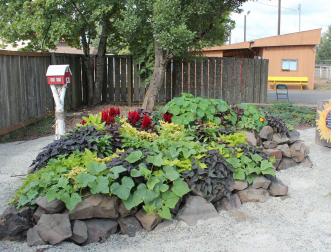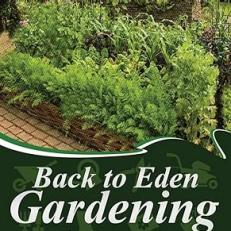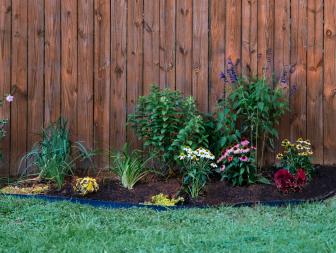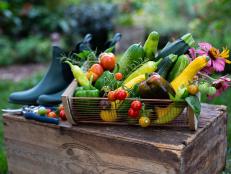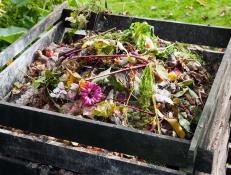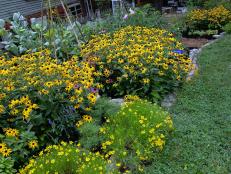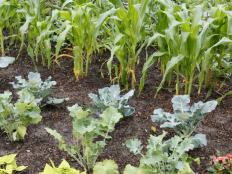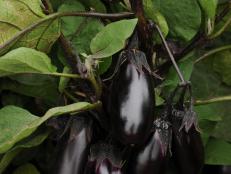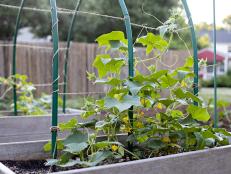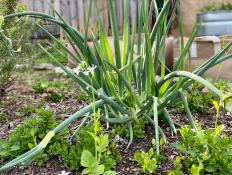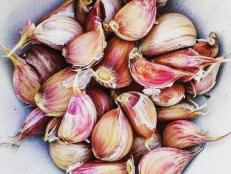No-Till Gardening Methods
No-till gardening saves time, conserves water and reduces weeds. There are several methods including Hugelkultur, Ruth Stout, back-to-Eden and lasagna gardening. Find out how to incorporate these organic practices in your yard.

No-till gardening (aka — zero tillage or no-dig gardening) offers a sustainable path to gardening that's as kind to the earth as it is to your back. This method layers organic materials like compost and mulch directly on top of the soil, promoting a rich, living ecosystem right in your backyard. It's an approach that saves time, conserves water and reduces weeds, making gardening accessible for spaces big and small.

PigzillaJo
Cardboard mulch helps keep weeds at bay and provides nutrients to the soil as the cardboard breaks down.
In This Article
- What is No-Till Gardening?
- What are Other Names for No-Till Gardening?
- What are the Benefits of No-Till Gardening?
- How to Start a No-Till Garden?
- What’s the Difference Between Compost and Mulch, and Why Does it Matter in No-Till Gardening?
- What Supplies Do You Need for No-Till Gardening?
- How Do You Maintain a Healthy No-Till Garden?
Transitioning to no-till starts simply with cardboard, compost and mulch, laying a natural foundation for a long-term healthy garden. A quick soil test can guide you on any additional amendments needed, ensuring your garden's success from the ground up. As you explore no-till gardening, you'll learn the benefits of working with nature to create the perfect space. Welcome to a world of gardening that is truly easier and better for the environment.
What is No-Till Gardening?
No-till gardening is a gentle, sustainable approach to gardening that skips the traditional step of turning the soil before planting. Instead of disturbing the earth with tilling, you layer organic materials like compost, leaves and mulch. This method nurtures the soil's natural structure, encourages beneficial microbial activity, and creates a thriving environment for your plants to grow with less effort. It's an earth-friendly way to garden that conserves water, reduces weeds, and cuts down on labor. Whether you're a seasoned gardener or just starting out, no-till gardening is a way to create healthier plants and happier soils.

StudioTangent
Layers of compost decompose to create beneficial microbial activity in the soil.
What are Other Names for No-Till Gardening?
No-till gardening can be known by several other names. Here are the most common ones and what they are most known for.
Hugelkultur Gardening
Hugelkultur involves creating raised beds filled with rotting wood, topped with soil and compost. This method improves water retention and soil fertility as the wood decomposes, reducing the need for watering and fertilizing.
Ruth Stout Gardening
Named after Ruth Stout, this method uses a thick layer of mulch (like straw) to suppress weeds, retain soil moisture, and improve soil health, eliminating the need for tilling and frequent watering.
Back-to-Eden Gardening
Popularized by Paul Gautschi, Back-to-Eden gardening covers the soil with compost and a thick layer of wood chips to retain moisture, suppress weeds, and enrich the soil, promoting a low-maintenance, sustainable garden.
Shop No-Dig Gardening Books
Lasagna Gardening
Lasagna gardening builds garden beds through layers of organic material (like cardboard, green and brown waste) over the ground. This no-dig method suppresses weeds and improves soil fertility as the layers decompose.
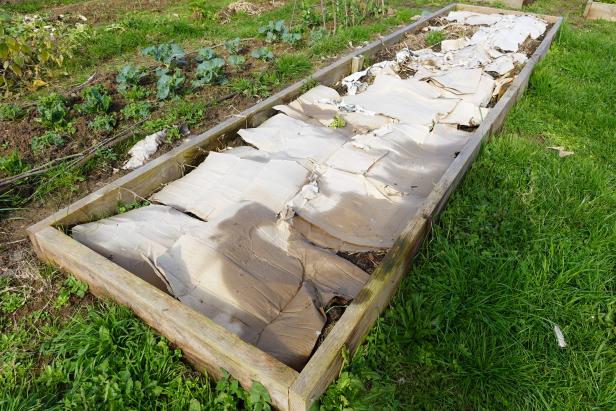
La Huertina De Toni
Raised beds are filled with a layer of cardboard for the lasagna method of no-till gardening.
As you can see, each of these methods are very similar to no-till gardening. It highlights the method's gentle approach to nurturing plants without disturbing the soil. So, whether you're layering like in lasagna gardening or simply choosing not to dig, you're embracing a practice that's good for your garden space.
What are the Benefits of No-Till Gardening?
No-till gardening comes with many benefits. By mimicking natural ecosystems, this method creates a beautiful balance in your garden, encouraging a thriving underground world of beneficial microbes and insects. Not only does it cut down on the physical labor of traditional gardening — since there's no need for tilling or turning the soil — but it's also a perfect match for small spaces, transforming even the tiniest of plots into productive gardens.
Over time, you'll find that weeds become less of an issue, as the undisturbed soil and mulch layers naturally suppress unwanted growth. Plus, no-till gardening significantly reduces soil erosion, keeping your high-quality topsoil right where it belongs. All in all, no-till gardening is a less labor-intensive, space-efficient and environmentally friendly way to cultivate a lush, thriving garden.
How to Start a No-Till Garden?
Getting started with no-till gardening is an exciting journey into a more sustainable way of cultivating your garden, and it begins with a shift in mindset. Instead of seeing soil as something to be turned and tilled, view it as a living ecosystem that you're partnering with to grow your plants.
1. Clear the Area
Choose where you want the garden, and then cut down weeds, grass or other debris, rather than digging them up.
2. Lay Down Cardboard
Generously lay cardboard over your garden area to smother any remaining weeds or grass underneath. This acts as a barrier, which will eventually decompose, enriching the soil.
3. Top the Cardboard With Lots of Compost
This introduces essential nutrients and beneficial microorganisms to your garden, kickstarting the soil's transformation into a fertile growing medium.
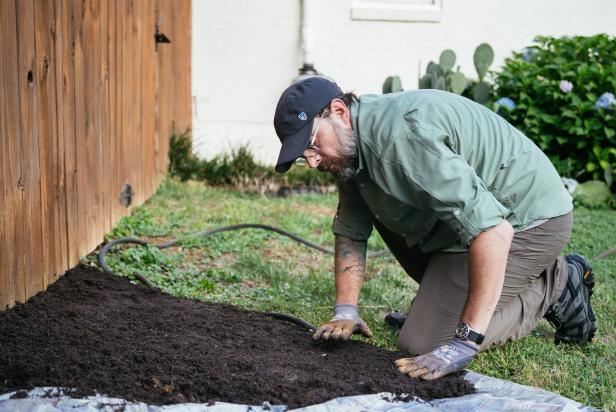
4. Add a Layer of Mulch on top of the Compost
This could be straw, wood chips, or leaf mold. Mulch retains moisture, keeps the soil cool, and further suppresses weeds, all while breaking down over time to feed your garden.
Remember, transitioning to no-till gardening is a process that may take a season or two to fully get into place or see the benefits. But with patience and a new approach to interacting with your garden's ecosystem, you'll be on your way to a healthier, more productive garden with less work and more rewards.
What’s the Difference Between Compost and Mulch, and Why Does it Matter in No-Till Gardening?
In the world of no-till gardening, understanding the difference between compost and mulch is key to nurturing a vibrant, healthy garden. While both play crucial roles in supporting plant life, they serve distinct purposes and are applied differently within the garden ecosystem.
First, compost is decomposed organic matter that enriches the soil by adding nutrients and improving its structure. It's like a vitamin boost for your plants, encouraging robust growth and a thriving microbial environment. In no-till gardening, compost is spread directly on top of the soil or existing mulch layer, where it integrates with the earth to feed the plant roots below. Creating compost involves collecting kitchen scraps, yard waste, and other organic materials in a compost bin or pile and allowing them to break down over time. This nutrient-rich compost can then be layered into your garden to nourish your plants without the need for traditional soil tilling.
Mulch is applied on top of the compost layer to retain moisture, regulate soil temperature and suppress weed growth. Mulch materials can be organic — such as straw, wood chips, leaves or grass clippings — or inorganic, like stones or landscape fabric. However, organic mulches are preferred in no-till gardens for their ability to break down and add organic matter to the soil over time, further enriching it.

Jesse Frost
Compost on the left and mulch on the right
The combination of compost and mulch in a no-till garden is what makes this method so effective. Compost provides nutrients and enhances soil structure, promoting healthy plant growth. Mulch conserves water, keeps the soil cool and moist, and adds a protective layer that improves over time. Together, they create a strong garden environment that requires less intervention and is more resilient against pests and diseases.
What Supplies Do You Need for No-Till Gardening?
Diving into no-till gardening is pretty straightforward, requiring very few specialized supplies. Initially, you'll need cardboard to suppress weeds, compost to enrich the soil and mulch to retain moisture and further discourage weeds. Beyond these essentials, your regular gardening toolkit — like a watering can and a hand trowel — will serve you well in a no-till garden.
It’s important to understand your starting point, so consider doing a simple soil test. (Check with your local Extension or buy a kit online.) This will help you learn about the specific needs of your soil and determine if and what additional amendments are required to balance nutrients or improve texture. With this knowledge, you can tailor your approach, ensuring your no-till garden thrives from the ground up.

Nadzeya Pakhomava
How Do You Maintain a Healthy No-Till Garden?
It’s not hard to maintain a healthy, no-till garden when you follow a few specific rules.
1. Maintain Organic Pest Control
Employ methods like companion planting, using beneficial insects and applying natural repellents or barriers to manage pests without chemicals. These practices encourage a balanced ecosystem that keeps harmful pests in check.
2. Keep Up With Watering and Irrigation
For best results, consider drip irrigation or soaker hoses for deep, efficient watering that reaches plant roots directly. This reduces water usage and minimizes the spread of diseases compared to overhead watering.
3. Stay on Top of Weed Control
Suppress weeds with thick layers of mulch and employ strategic planting to outcompete weeds for sunlight and nutrients. Hand-pulling or using a tool to cut weeds at the soil surface is a good way to manage them.
4. Keep Adding Compost and Mulch
Regularly add compost to supply nutrients and maintain soil health. Mulch is an excellent way to protect your soil from erosion and temperature extremes.
No-till gardening, celebrated for its simplicity and sustainability, promises a garden that thrives with minimal effort. As we embrace this method, we contribute to a healthier planet and enrich our gardening experience. It's also a great reminder that sometimes the best way to move forward is by letting nature take the lead.
Companion Planting in Your Vegetable Garden 16 Photos
Find detailed info and links for specific companion plants and planting techniques for popular vegetable garden crops in our alphabetical list, from beets to zucchini.
4 Ways to Convert Lawn to a Flower Bed
Here are four chemical-free ways to turn your lawn into your garden.






